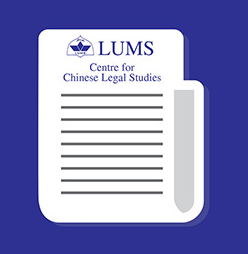
While COVID-19 may have originated in China, its efficacious response to the contagion has been widely lauded. China had robust laws already in place to deal with such a crisis, in the aftermath of the SARS outbreak in the early 2000s, and in line with its responsibilities under the WHO’s International Health Regulations, 2005 (IHRs).
The core legislation dealing with epidemics in China is the Law on the Prevention and Treatment of Infectious Diseases, 1989 (LPTID). It divides infectious diseases into categories, each accompanied by appropriate response measures. The LPTID grants the state powers to isolate infected persons, keep suspected cases under observation and suspend mass gatherings in areas designated as ‘epidemic areas’. It also allows the provinces, autonomous regions, and municipalities to blockade such areas within their jurisdictions. In such cases, the State Council may also restrict main-line traffic or impose closure of the national border to contain the epidemic.
Additionally, The Regulation on Contingent Public Health Emergencies, 2003, establishes an emergency response system, allowing central and provincial governments to coordinate their efforts. This regulation was complemented with the Law on Emergency Response, 2007. This law requires government institutions at all levels to formulate contingency plans for emergencies and employ them according to the needs of their respective administrative areas.
These provisions, coupled with a well-established technological framework, enabled the Chinese government to act swiftly during the outbreak of COVID-19. First, in line with the powers granted under Article 43 of LPTID, a lockdown was imposed in Hubei. All transportation to and from the affected province was prohibited, and heavy restrictions were placed on citizens’ movements, with only essential services allowed to continue. Second, protocols for diagnosis and treatment were put in motion to prevent further spread of the virus. The most important measure was the availability of free and rapid testing; especially for those whose medical insurance could not afford the costs. Third, the government made efficient use of technology, such as big data and artificial intelligence (AI), allowing it to strengthen contact tracing and track developing clusters in infected areas.
China’s legal frameworks are indicative of its foresight, proactive legal behaviour, and focus on human security through responsible action against potential health emergencies. In contrast, Pakistan lacks the necessary legislation to trigger health emergency measures swiftly against a national health crisis. According to WHO’s 2017 Report on the Joint External Evaluation of IHRs Core Capacity, while Pakistan has a substantial legal framework in place for most technical areas of health, crucial legislative gaps exist in the areas of directing emergency responses and implementing containment measures during a public health crisis.
Due to the absence of an appropriate law addressing public health emergencies, the Government of Pakistan is primarily dealing with the present crisis under the National Disaster Act of 2010 (NDA), mobilising the National Disaster Management Authority (NDMA) to take measures necessary for the control and treatment of the virus. Though steps taken by Pakistan under the NDA have received a commendation from the WHO, the existing framework cannot substitute for comprehensive legislation on public health emergencies.
Following the 18th Amendment to the Constitution, the responsibility to legislate on the subject of ‘health’ falls under the purview of provincial governments. Despite the threat of existing infectious diseases, the provincial governments have failed to address the issue proactively. The Khyber Pakhtunkhwa Public Health (Surveillance and Response Act) 2017, for instance, was the first legislation at the provincial level to put in place mechanisms for surveillance, detection and reporting to prevent and control diseases. Despite this, the provincial government had failed to establish the stipulated ‘disease surveillance centres’, which were set up as recently as March in response to reported COVID-19 cases. Similarly, the Government of Punjab passed The Punjab Infectious Diseases Prevention and Control Ordinance last month, putting in place necessary protocols identical to China’s LPTID. Though a step in the right direction, it fails to mandate measures for the general public during an epidemic, such as lockdowns or blockades of epidemic struck areas.
Furthermore, despite the coordination between the provincial and federal governments under the National Coordination Committee (NCC), there is a disagreement between the administrations on the appropriate measures to be taken. Although such mechanisms are suitable for dealing with each type of outbreak on an ad hoc basis, they alone cannot be responsible for formulating strategies for future epidemics.
It is imperative that Pakistan moves to preemptively adopt a system of response and action, rather than waiting for another calamity to induce the right policy steps. Such policy models require the state to re-define its understanding of ‘national security’ to comprehensively account for all potential non-traditional security threats, including pandemics. The present legal framework must be substantiated with protocols for containment and emergency health measures. It must include adequate and unified procedures to ensure coordination, regulation, and implementation of the same.
The 2003 SARS outbreak served as China’s cue to prioritise health security. Perhaps this will be ours.
The authors are colleagues at the Centre for Chinese Legal Studies.
This article was originally published in The Nation on the 2nd of May, 2020 and can be accessed here.

